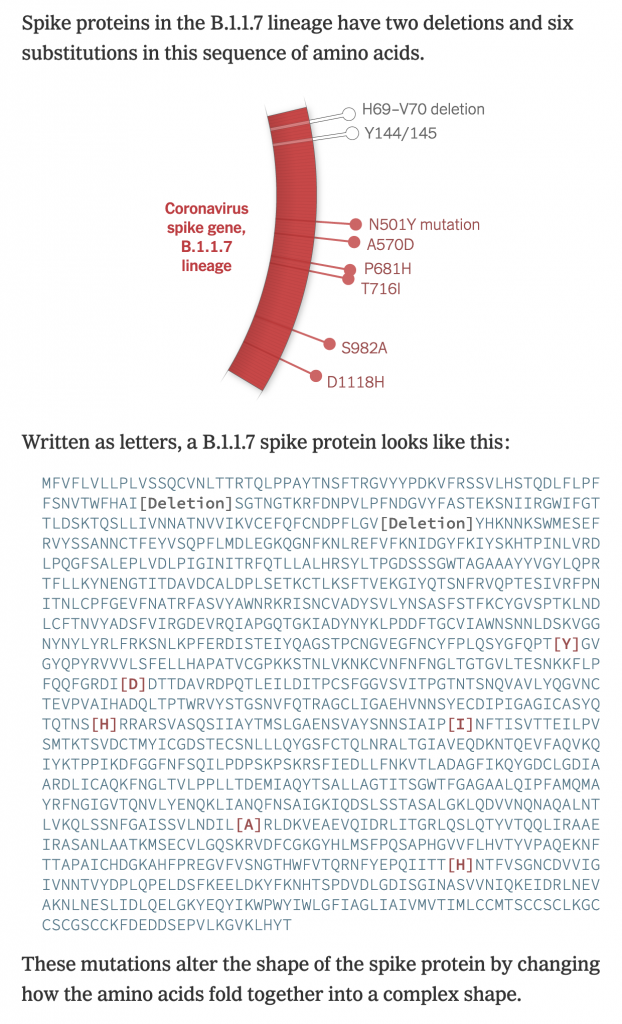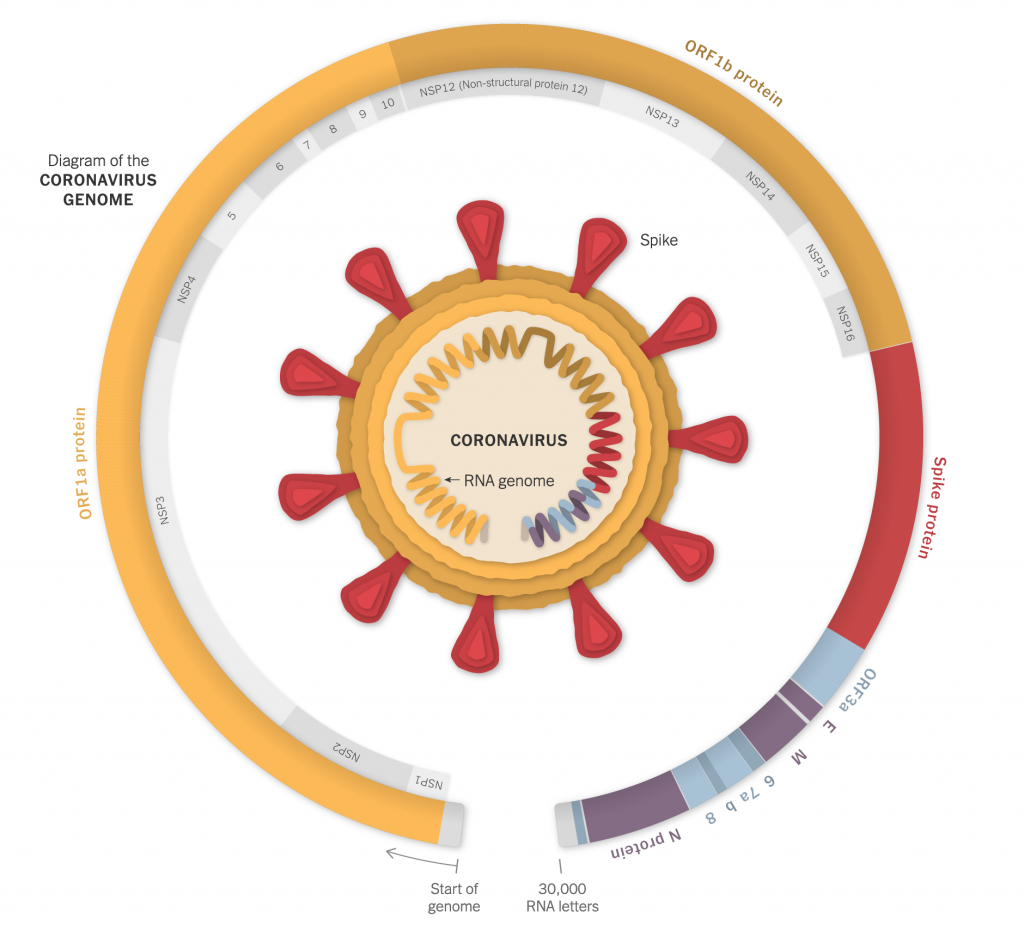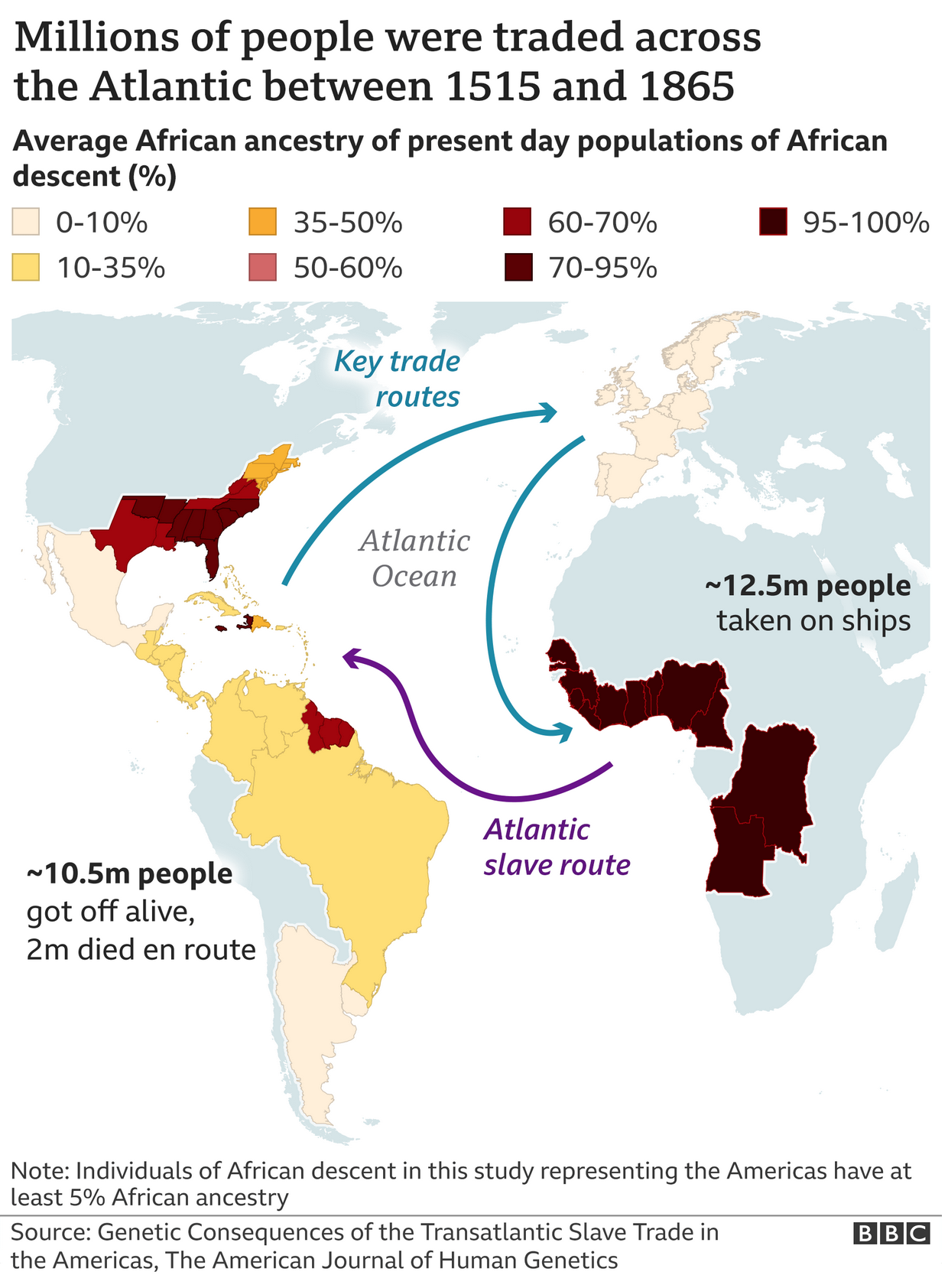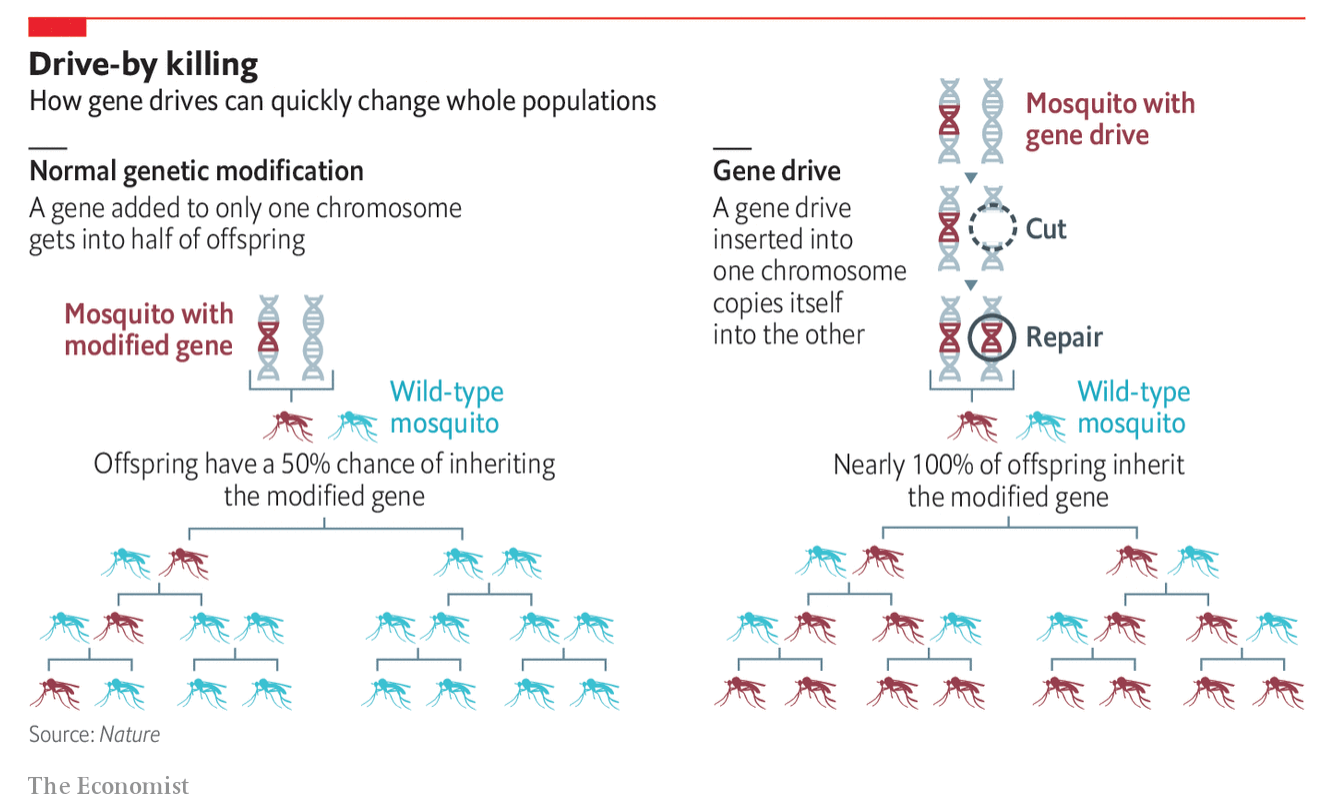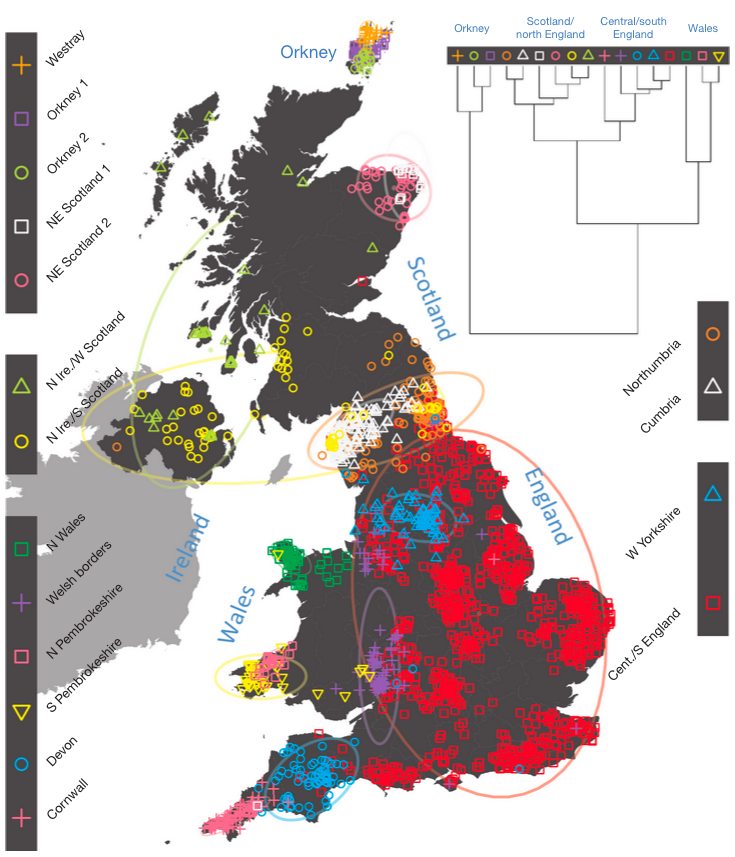Earlier this year I posted a short piece that compared my DNA ethnicity estimates provided by a few different companies to each other. Ethnicity estimates are great cocktail party conversations, but not terribly useful to people doing serious genealogy research. They are highly dependent upon the available data from reference populations.
To put it another way, if nobody in a certain ethnic group has tested with a company, there’s no real way for that company to place your results within that group. In the United States, Native Americans are known for their reluctance to participate and, last I heard, they are under-represented in ethnicity estimates. Fortunately for me, Western European population groups are fairly well tested.
But these reference populations are constantly being updated and new analysis being performed to try and sort people into ever more distinct genetic communities. (Although generally speaking the utility of these tests only goes back a handful of generations.)
Last night, when working on a different post, I received an email saying Ancestry.com had updated their analysis of my DNA. So naturally I wanted to compare this most recent update to last September’s.
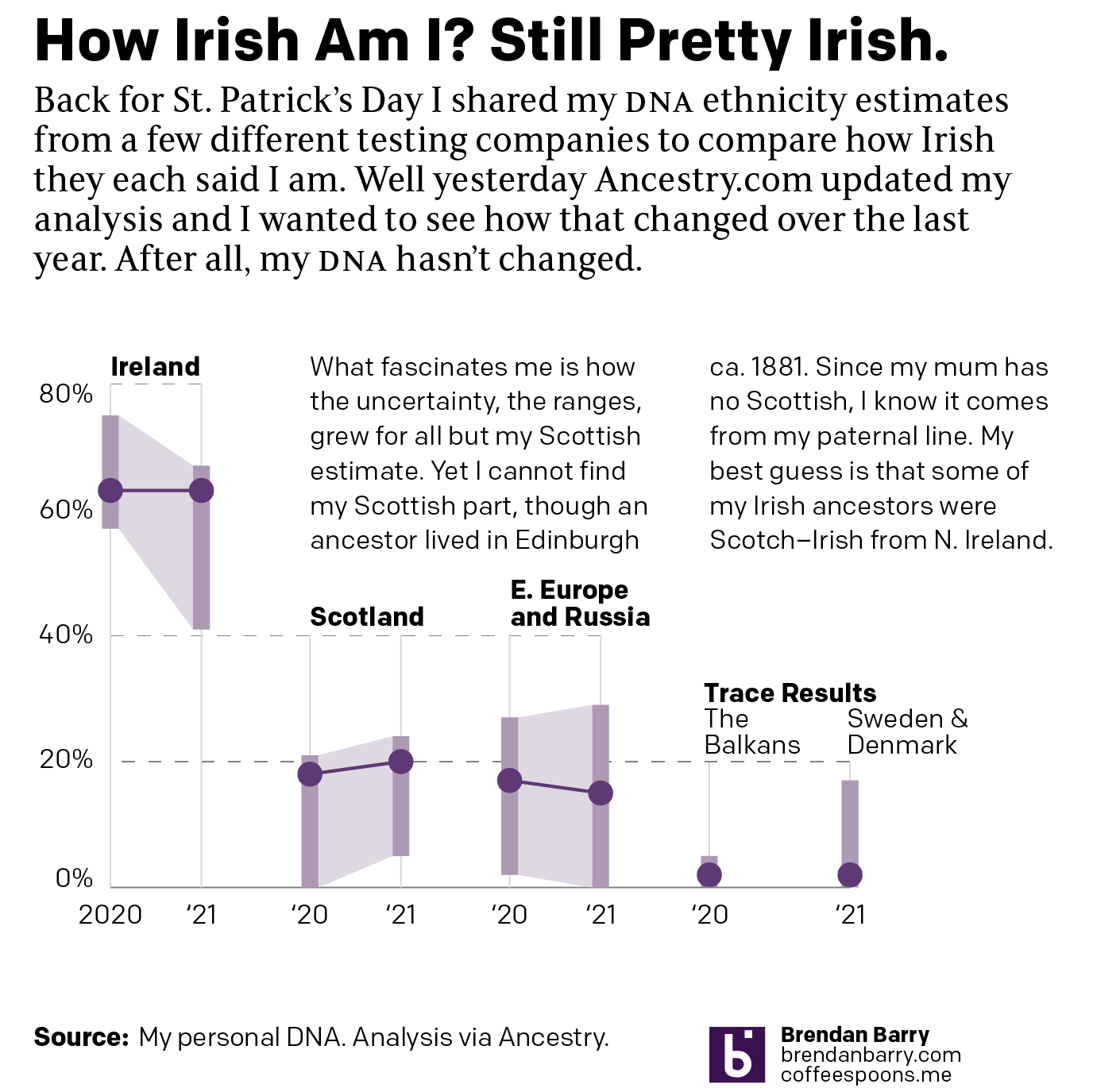
Sometimes when you look at data and create data visualisation pieces, the story is that there is very little change. And that’s my story. The actual number for my Irish estimate remained the same: 63%. I saw a slight change to my Scottish and Slavic numbers, but nothing drastic. My trace results changed, switching from 2% from the Balkans to 2% from Sweden and Denmark. But you need to take trace results with a pretty big grain of salt, unless they are of a different continent. Broadly speaking, we can be fairly certain about results at a continental level, but differences between, say, French and Germans are much harder to distinguish.
The Scottish part still fascinates me, because as far back as I’ve gone, I have not found an identifiable Scottish ancestor. A great-great-grandfather lived for several years in Edinburgh, but he was the son of two Ireland-born Irish parents. I also know that this Scottish part of me must come from my paternal lines as my mother has almost no Scottish DNA and she would need to have some if I were to have had inherited it from her.
Now for about half of my paternal Irish ancestors, I know at least the counties from which they came. My initial thought, and still best guess, is that the Scottish is actually Scotch–Irish from what is today Northern Ireland. But I am unaware of any ancestor, except perhaps one, who came from or has origins in Northern Ireland.
The other thing that fascinated me is that despite the additional data and analysis the ranges, or degree of uncertainty in another way of looking at it, increased in most of the ethnicities. You can see the light purple rectangles are actually almost all larger this year compared to last. I can only wonder if this time next year I’ll see any narrowing of those ranges.
Credit for the piece is mine.

